8 Herbal Teas For Dry Skin
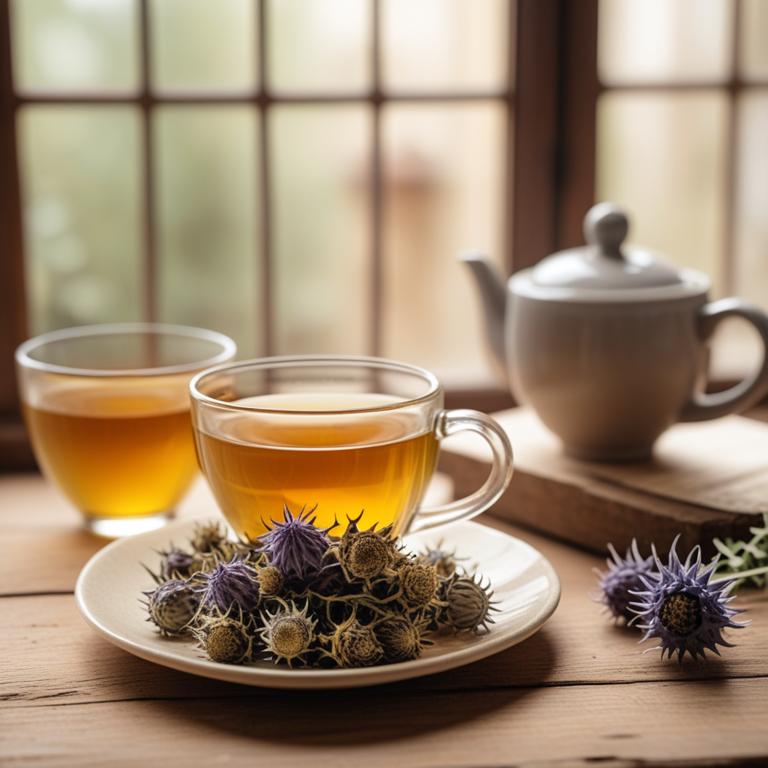
Herbal teas can be a wonderful way to soothe dry skin, and it's all thanks to their incredible properties.
You see, these teas are made from plants that have been used for centuries to calm and hydrate the skin. Take Urtica dioica, for example - also known as nettle tea. It's rich in antioxidants and has anti-inflammatory properties that help to lock in moisture and reduce dryness. Another great example is Aloe barbadensis, or aloe vera tea. It's like a drink of pure hydration, as it's made from the same plant that we use to soothe burns and dry skin on the outside.
And then there's Calendula officinalis, or marigold tea, which is packed with flavonoids that help to calm and protect the skin. These herbal teas can bring so many benefits to your life. Not only do they help to relieve dry skin, but they can also improve the health of your skin in the long run. By drinking these teas, you're giving your skin the nutrients it needs to stay hydrated and healthy, which can lead to a more radiant and glowing complexion. Plus, many of these teas are also anti-aging, which means they can help to reduce the appearance of fine lines and wrinkles. And the best part?.
They're so easy to incorporate into your daily routine - just steep a tea bag in hot water, let it cool, and drink up!.
- 1. Urtica dioica
- 2. Aloe barbadensis
- 3. Calendula officinalis
- 4. Melissa officinalis
- 5. Glycyrrhiza glabra
- 6. Taraxacum officinale
- 7. Echinacea purpurea
- 8. Silybum marianum
1. Urtica dioica
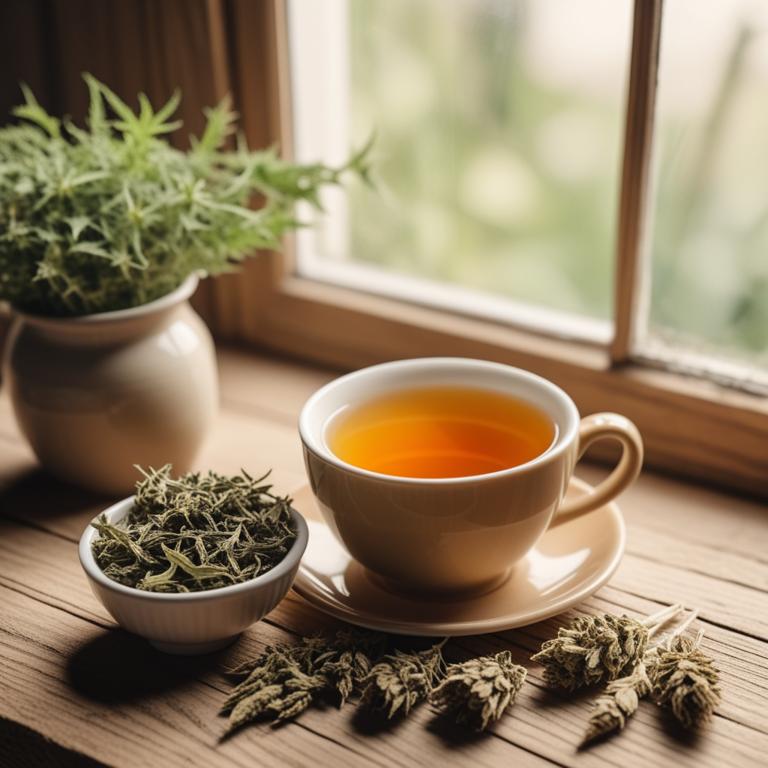
Urtica dioica teas contains compounds like quercetin, kaempferol, and isorhapontigenin.
These bioactive constituents have anti-inflammatory and antioxidant properties, which help to soothe and calm dry skin. The flavonoids in Urtica dioica tea reduce inflammation and protect the skin from damage caused by free radicals, promoting a healthy skin barrier. The plant also contains vitamin C, which supports collagen production and enhances skin elasticity, reducing the appearance of fine lines and wrinkles.
By drinking Urtica dioica tea, you can help to nourish and hydrate your skin, reducing dryness and promoting a more even skin tone.
- Gather 1 cup of dried Urtica dioica leaves and stems.
- Measure 1 tablespoon of dried Urtica dioica leaves and stems for every 1 cup of boiling water.
- Heat 1 cup of water in a pot until boiling.
- Add measured Urtica dioica leaves and stems to the boiling water, then reduce heat and let it simmer for 5-10 minutes.
- Strain the tea and let it cool down before drinking. Drink 1-2 cups of tea per day to soothe dry skin.
2. Aloe barbadensis
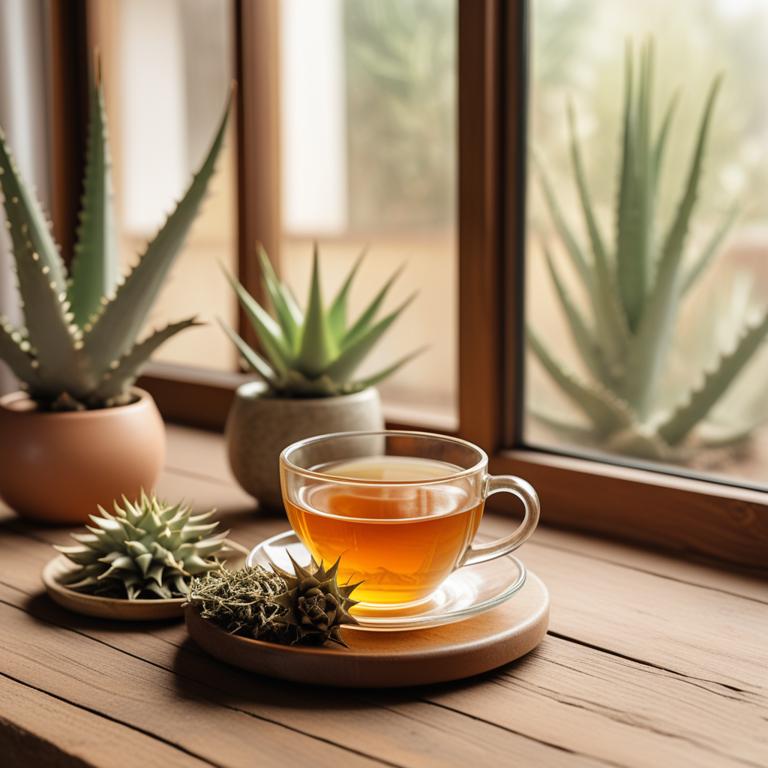
Aloe barbadensis teas contains a variety of bioactive compounds that help soothe and moisturize dry skin.
These compounds include vitamins A, C, and E, as well as fatty acids like glycerin, malic acid, and lactic acid. The anti-inflammatory properties of aloe vera, specifically the presence of aloin and aloe-emodin, help reduce redness and irritation associated with dry skin. Additionally, the gel of aloe vera contains hyaluronic acid, which can hold up to 1000 times its weight in water, providing long-lasting hydration to dry skin.
By replenishing moisture and reducing inflammation, aloe barbadensis teas can help alleviate dry skin symptoms and promote a healthier skin barrier.
- Wash your hands. Take 1 aloe vera leaf and peel it to get the clear gel.
- Crush the aloe gel to make 4 cups of pulp. You can use a blender or a mortar and pestle.
- Add 1 tablespoon of honey and 1 cup of boiling water to the aloe pulp. Mix well.
- Let the mixture sit for 10-15 minutes. Then, strain it using a cheesecloth or a fine-mesh sieve.
- Drink 1 cup of the aloe tea 2-3 times a day to help soothe dry skin.
3. Calendula officinalis
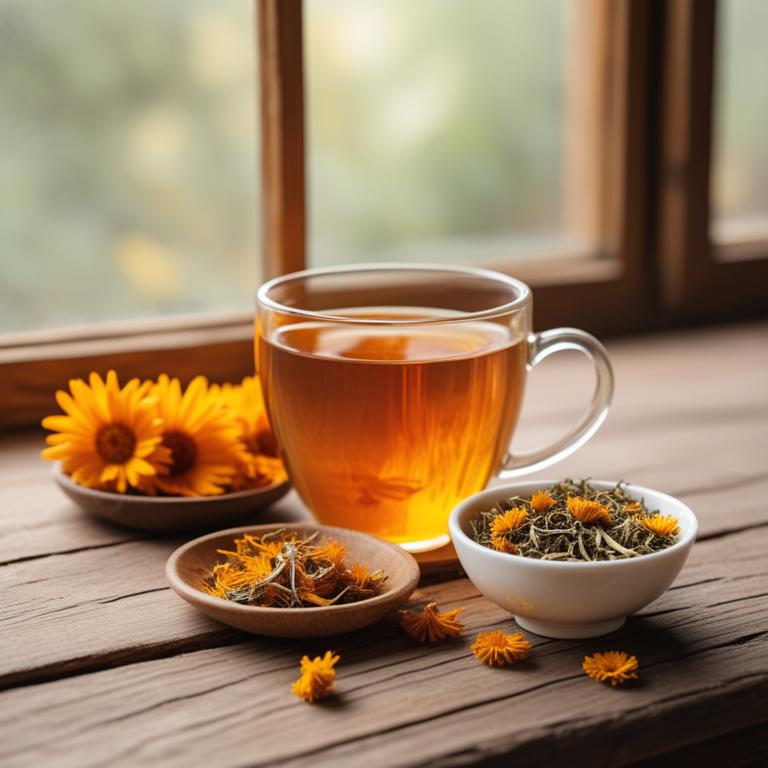
Calendula officinalis teas contains carotenoids, flavonoids, and triterpenoid saponins, which are biologically active constituents that help soothe and moisturize dry skin.
These compounds have anti-inflammatory and antioxidant properties, which can reduce redness and irritation associated with dry skin. The flavonoids in Calendula officinalis teas, such as quercetin and kaempferol, have been shown to improve skin elasticity and reduce water loss, making it a popular remedy for dry skin conditions. Additionally, the triterpenoid saponins in Calendula officinalis teas have been found to have emollient properties, which can help lock in moisture and protect the skin from further dryness.
Drinking Calendula officinalis teas may help to nourish the skin from the inside out, promoting a healthier and more resilient skin barrier.
- Gather 1 cup of fresh Calendula officinalis flowers or 2 tablespoons of dried flowers.
- Bring 2 cups of water to a boil in a saucepan.
- Add the Calendula flowers to the boiling water and reduce heat.
- Steep the mixture for 5-7 minutes, then strain the liquid.
- Drink 1 cup of the Calendula tea 2-3 times a day to soothe dry skin.
4. Melissa officinalis

Melissa officinalis teas contains active constituents like linalool and rosmarinic acid.
These compounds have anti-inflammatory and antioxidant properties. They help soothe and calm dry skin by reducing redness and irritation. The antioxidants also protect the skin from damage caused by free radicals, promoting healthy skin cell regeneration.
By using Melissa officinalis teas, you can help your skin retain moisture and maintain its natural barrier.
- Gather 2 tablespoons of dried Melissa officinalis leaves.
- Boil 1 cup of water in a pot.
- Pour the boiling water over the Melissa leaves in a cup.
- Let it steep for 5-7 minutes, then strain the leaves.
- Drink 1-2 cups of the tea, 2-3 times a day, to help soothe dry skin.
5. Glycyrrhiza glabra

Glycyrrhiza glabra teas contains compounds like glycyrrhizin and flavonoids, which are known for their anti-inflammatory properties.
Glycyrrhizin helps to reduce inflammation and soothe dry skin by inhibiting the production of prostaglandins, hormone-like substances that cause redness and irritation. Flavonoids in the tea, such as kaempferol and quercetin, have antioxidant properties that help to protect the skin from damage caused by free radicals. These compounds also help to improve skin hydration by increasing the production of ceramides, natural lipids that lock in moisture.
By reducing inflammation and improving skin hydration, Glycyrrhiza glabra teas can provide relief from dry, irritated skin.
- Gather 1 cup of water, 1 tablespoon of dried Glycyrrhiza glabra root, and a tea infuser or strainer.
- Boil the water in a pot and let it cool for 1-2 minutes.
- Add the dried Glycyrrhiza glabra root to the tea infuser or strainer and place it in the pot.
- Let the mixture steep for 5-7 minutes, then remove the root and tea infuser or strainer.
- Strain the tea into a cup and drink it 2-3 times a day to help soothe dry skin.
6. Taraxacum officinale
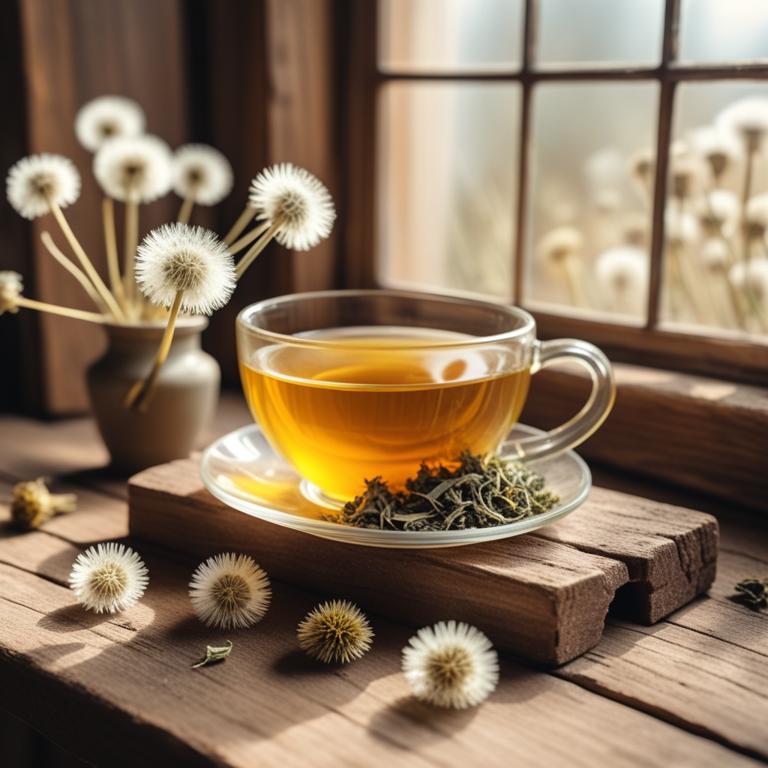
Taraxacum officinale teas contains bioactive constituents like taraxasterol, taraxeryl acetate, and inulin, which are beneficial for dry skin.
Taraxasterol has anti-inflammatory properties that help reduce redness and irritation associated with dry skin. Taraxeryl acetate is a triterpene that helps to lock in moisture and soothe dry skin. Inulin, a polysaccharide, has antioxidant properties that protect the skin from damage caused by free radicals, which can exacerbate dry skin conditions.
By drinking Taraxacum officinale teas, the skin may benefit from the soothing and moisturizing effects of these compounds.
- Gather 1 cup of fresh Taraxacum officinale leaves and flowers.
- Dry the leaves and flowers in a low-temperature oven (150°F - 200°F) for 1-2 hours.
- Measure out 1 tablespoon of dried Taraxacum officinale and place it in a tea infuser.
- Heat 1 cup of water to 212°F (100°C) and pour it over the tea infuser.
- Steep the tea for 5-7 minutes, then strain and drink 1 cup before bed to help soothe dry skin.
7. Echinacea purpurea

Echinacea purpurea teas contains alkylamides, glycosides, and phenolic acids as its bioactive constituents.
These compounds have anti-inflammatory properties that can help soothe and calm dry, irritated skin. The alkylamides in Echinacea purpurea teas are known to reduce inflammation by blocking the production of pro-inflammatory enzymes. The glycosides present in the tea also have antioxidant properties, which can help protect the skin from damage caused by free radicals and promote skin health.
By reducing inflammation and protecting the skin from damage, Echinacea purpurea teas can help alleviate dry skin symptoms and promote a smoother, healthier complexion.
- Gather 2 tablespoons of dried Echinacea purpurea flowers.
- Pour 1 cup of boiling water over the dried flowers in a cup.
- Steep the mixture for 5-7 minutes, then strain it.
- Add 1 tablespoon of honey to the tea, if desired, for taste.
- Drink the tea 2-3 times a week to help soothe dry skin.
8. Silybum marianum

Silybum marianum teas contains silymarin, a group of flavonoids and polyphenols that act as antioxidants and anti-inflammatory agents.
These compounds help soothe dry skin by reducing inflammation and repairing damaged skin cells. Silymarin also has antioxidant properties that protect the skin from environmental stressors and oxidative damage, which can contribute to dryness. The flavonoids in Silybum marianum tea, particularly silibinin and silidianin, have been shown to improve skin hydration and reduce water loss.
By reducing inflammation and protecting the skin from damage, Silybum marianum tea may help to alleviate dry skin symptoms.
- Gather 2 tablespoons of dried Silybum marianum flowers and leaves.
- Place 1 cup of boiling water in a tea infuser or a heat-resistant cup.
- Add the dried Silybum marianum flowers and leaves to the boiling water.
- Steep for 5-7 minutes, then strain the mixture into another cup.
- Drink 1 cup of the tea 2-3 times a day to help soothe dry skin.